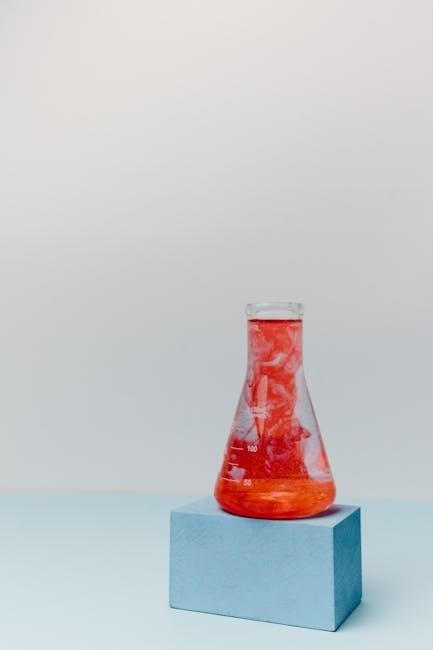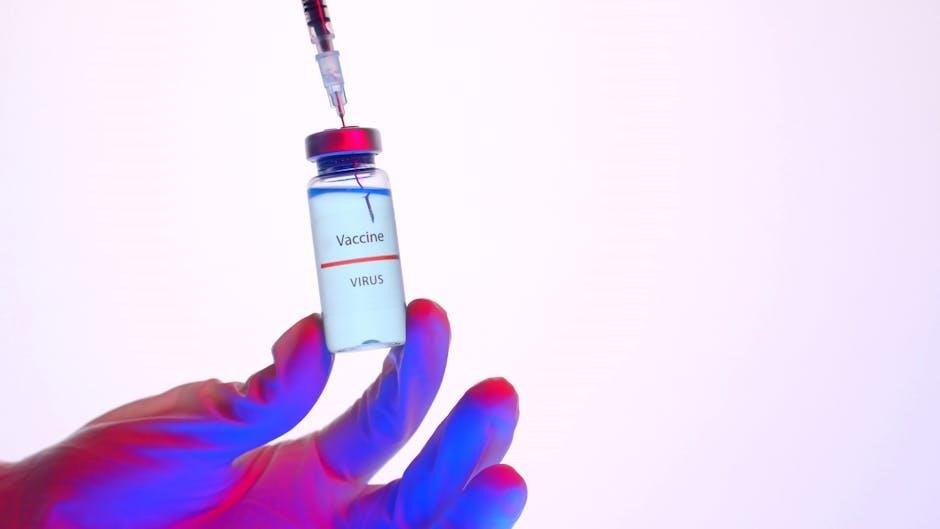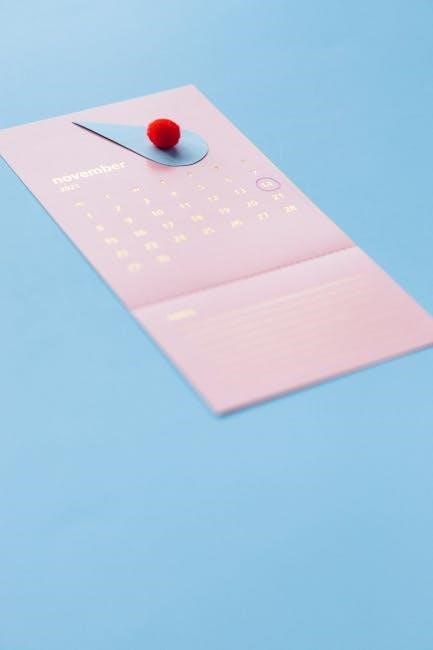
true colours test pdf
True Colors is a simplified adaptation of the Myers-Briggs Personality Test. It identifies personality styles‚ labeling them with colors. This model categorizes personality styles based on researchers Isabel Briggs-Myers‚ Katherine Briggs‚ and David Keirsey.
The True Colors Personality Assessment is a popular tool designed to help individuals gain a deeper understanding of themselves and others. It’s a simplified version of the Myers-Briggs Type Indicator (MBTI)‚ focusing on four core personality types represented by the colors blue‚ gold‚ orange‚ and green. This assessment aims to identify your dominant color‚ revealing key traits and behavioral patterns.
Unlike the MBTI‚ which identifies 16 personality types‚ True Colors offers a more accessible framework for understanding personality differences. It’s based on the work of Isabel Briggs-Myers‚ Katherine Briggs‚ and David Keirsey. Don Lowry further developed this concept into the True Colors system‚ using colors to represent these different personality styles. The test typically involves a questionnaire where individuals rank word clusters.
The True Colors methodology has roots in established personality theories‚ notably the work of Isabel Briggs-Myers and Katherine Briggs‚ who developed the Myers-Briggs Type Indicator (MBTI); The MBTI‚ a widely used tool‚ identifies 16 distinct personality types. Recognizing the complexity of the MBTI‚ David Keirsey sought to simplify these concepts.
Don Lowry‚ a student of Keirsey‚ took this simplification further‚ creating the True Colors system. Lowry’s system uses four primary colors – blue‚ gold‚ orange‚ and green – to represent different personality types and behavioral styles. He aimed to translate complex personality theory into practical information accessible to everyone. By associating personality traits with colors‚ Lowry created a memorable and easily understandable framework for self-awareness and interpersonal understanding.

True Colors Test: Understanding Your Personality
The Origins of True Colors: From Myers-Briggs to Don Lowry
The Four Core Personality Colors: An Overview
The True Colors system identifies four core personality types‚ each represented by a distinct color: Blue‚ Gold‚ Orange‚ and Green. Each color embodies a unique set of values‚ strengths‚ and characteristics that influence behavior and interactions. Understanding these core colors provides insights into individual motivations‚ communication styles‚ and approaches to problem-solving.
Blues are often described as empathetic‚ compassionate‚ and relationship-oriented. Golds are typically responsible‚ organized‚ and value tradition. Oranges are known for their spontaneity‚ creativity‚ and love of adventure. Greens are analytical‚ intellectual‚ and driven by knowledge. While individuals may exhibit traits from multiple colors‚ one color usually dominates‚ shaping their overall personality and preferences. Recognizing these dominant colors in oneself and others can foster better understanding and communication.
The True Colors assessment utilizes a questionnaire to identify your core personality color. It includes traits grouped into four categories: Gold‚ Blue‚ Orange‚ and Green‚ revealing how it affects your relationships.
The Structure of the True Colors Questionnaire
The True Colors questionnaire is designed to reveal your dominant personality color through a series of questions. These questions are carefully structured to assess various traits and preferences. The assessment is based on forty different personality traits‚ grouped into four sets of ten statements each.
Each set corresponds to one of the four core personality colors: Gold‚ Blue‚ Orange‚ and Green. The questionnaire presents word clusters horizontally in rows‚ requiring you to evaluate and compare the choices within each row. This comparative process helps identify which color resonates most strongly with your inherent characteristics and behavioral tendencies.
The structured format ensures a comprehensive evaluation‚ allowing for a nuanced understanding of your personality profile. It goes beyond simple categorization‚ providing insights into your motivations‚ strengths‚ and potential areas for growth. By analyzing your responses to these carefully crafted questions‚ the assessment uncovers your unique blend of personality traits.
Instructions for Completing the True Colors Test
To accurately determine your True Colors‚ carefully read the instructions before starting the questionnaire. Each section presents groups of word clusters arranged horizontally. Your task is to compare all four boxes in each row‚ focusing on the overall sense of each box rather than individual words. Do not overanalyze; simply go with your initial impression.
Within each row‚ rank the boxes from 1 to 4‚ where 4 represents the description that is most like you‚ and 1 represents the description that is least like you. Use each number (1‚ 2‚ 3‚ and 4) only once per row. This ranking process ensures a comparative evaluation of your preferences and traits.
Remember‚ there are no right or wrong answers. The goal is to honestly assess which color resonates most strongly with your natural inclinations. By following these instructions‚ you can gain valuable insights into your personality and how it influences your interactions and behaviors. This process will help you discover your True Colors.

The True Colors Assessment Process
Scoring the Test: Identifying Your Dominant Color
After completing the True Colors questionnaire‚ the next crucial step is scoring the test to identify your dominant color. Each color—Gold‚ Blue‚ Orange‚ and Green—corresponds to a specific set of traits and preferences. To begin‚ tally the points you assigned to each color category across all sections of the questionnaire. Add up all the rankings (1-4) for each color.
Once you have the total score for each color‚ compare the totals. The color with the highest score is considered your dominant color‚ representing your primary personality style; It’s possible to have close scores between two colors‚ indicating a blend of traits. However‚ the color with the significantly higher score is generally your most influential;
Understanding your dominant color provides insights into your strengths‚ weaknesses‚ communication style‚ and how you approach various situations. This knowledge can enhance self-awareness and improve your interactions with others‚ fostering better relationships and more effective teamwork. Remember that this is a tool for understanding‚ not a definitive label.
True Colors utilizes four colors: blue‚ gold‚ orange‚ and green‚ to represent different personality types and behavioral styles. Understanding each color provides insights into individual strengths‚ weaknesses and communication preferences.
Blue Personality Traits and Characteristics
Blue personalities are often described as empathetic‚ warm‚ and romantic. They value meaningful relationships and strive to influence others positively. They are true romantics‚ cherishing small gestures of affection and symbols of romance like flowers and music.
In relationships‚ Blues seek drama‚ warmth‚ and empathy‚ fostering deep connections. They are often peacemakers‚ prioritizing harmony and understanding. They possess a strong desire to help others lead more significant lives‚ making them excellent counselors‚ teachers‚ and caregivers.
Blues are intuitive‚ imaginative‚ and passionate‚ often drawn to creative pursuits. They value authenticity and seek genuine connections with others. They are deeply empathetic and are sensitive to the needs of those around them. Blues thrive in environments where they can express their emotions and connect with others on a personal level. They are often idealistic and seek to make a positive impact on the world.
Gold Personality Traits and Characteristics
Gold personalities are characterized by their strong sense of responsibility‚ organization‚ and practicality. They value structure‚ order‚ and tradition. They are dependable‚ loyal‚ and detail-oriented‚ often excelling in roles that require planning and execution.
Golds are natural rule-followers and believe in doing things the right way. They are often described as the backbone of any organization‚ providing stability and consistency. They value security and predictability‚ and they thrive in environments with clear expectations and established routines.
Golds are hardworking and dedicated‚ always striving to meet their commitments. They are often seen as the “responsible” ones‚ taking on tasks and ensuring they are completed efficiently. They are practical and realistic‚ preferring tangible results over abstract ideas. Golds are excellent planners and organizers‚ able to manage time and resources effectively. They value loyalty and commitment‚ making them reliable friends‚ partners‚ and employees.
Orange Personality Traits and Characteristics
Orange personalities are known for their energy‚ spontaneity‚ and love of action. They are adventurous‚ daring‚ and thrive on excitement and new experiences. They are highly adaptable‚ resourceful‚ and enjoy taking risks.
Oranges are natural performers‚ often drawn to careers in sports‚ entertainment‚ or sales. They are charismatic‚ outgoing‚ and enjoy being the center of attention. They are impulsive and live in the moment‚ rarely worrying about the future.
Oranges are highly skilled at problem-solving‚ using their creativity and resourcefulness to find innovative solutions. They are competitive and enjoy challenges‚ always striving to push their limits. They are independent and prefer to learn through hands-on experience rather than formal instruction. Oranges are fun-loving and playful‚ bringing a sense of joy and excitement to any situation. They are energetic and enthusiastic‚ inspiring others with their passion and zest for life. They are quick thinkers and quick learners‚ able to adapt to changing circumstances with ease.

Understanding the True Colors
Green Personality Traits and Characteristics
Green personalities are characterized by their analytical minds‚ intellectual curiosity‚ and quest for knowledge. They are deep thinkers‚ constantly seeking to understand the world around them through logic and reason. They value intelligence‚ competence‚ and independence.
Greens are often drawn to careers in science‚ technology‚ engineering‚ and mathematics (STEM) fields. They are highly skilled at problem-solving‚ using their analytical abilities to identify and resolve complex issues. They are perfectionists‚ striving for accuracy and precision in their work. They are independent and prefer to work alone‚ valuing their autonomy and freedom.
Greens are innovative and creative‚ constantly seeking new and better ways of doing things. They are strategic thinkers‚ able to see the big picture and develop long-term plans. They are curious and inquisitive‚ always eager to learn new things. Greens are often seen as reserved and introverted‚ preferring deep conversations to small talk. They are highly intelligent and knowledgeable‚ able to discuss a wide range of topics with expertise. They value logic and reason above all else‚ making decisions based on facts and data rather than emotions.

Applications of True Colors
True Colors aids communication by understanding diverse personality styles. Knowing our own style‚ we can better understand reactions. This knowledge helps in resolving conflicts and fostering better relationships.
Using True Colors for Improved Communication
True Colors offers a framework for enhanced communication by identifying personality types through colors like blue‚ gold‚ orange‚ and green. Understanding these colors fosters empathy and appreciation for different perspectives. Recognizing individual styles allows us to tailor our communication‚ minimizing misunderstandings and conflicts.
Effective communication involves adapting to others’ needs. True Colors provides insights into these needs based on dominant personality traits. For example‚ communicating with a “gold” personality might involve emphasizing structure and responsibility‚ while communicating with an “orange” personality might require a more flexible and spontaneous approach.
This model promotes teamwork and collaboration by valuing diverse contributions. By recognizing and respecting each other’s strengths‚ teams can leverage individual talents for collective success. Using the True Colors assessment helps build stronger‚ more effective interpersonal relationships.